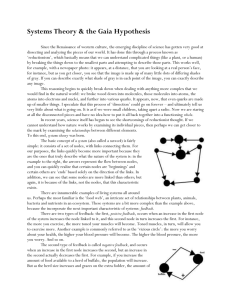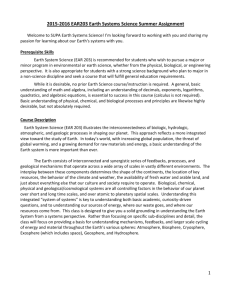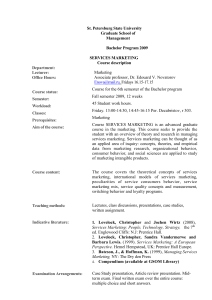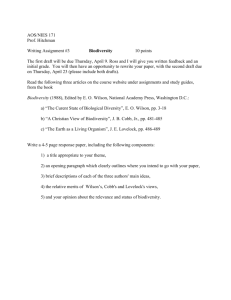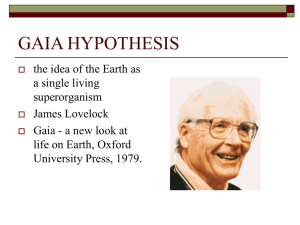see Figure 1 - Countercurrents.org
advertisement
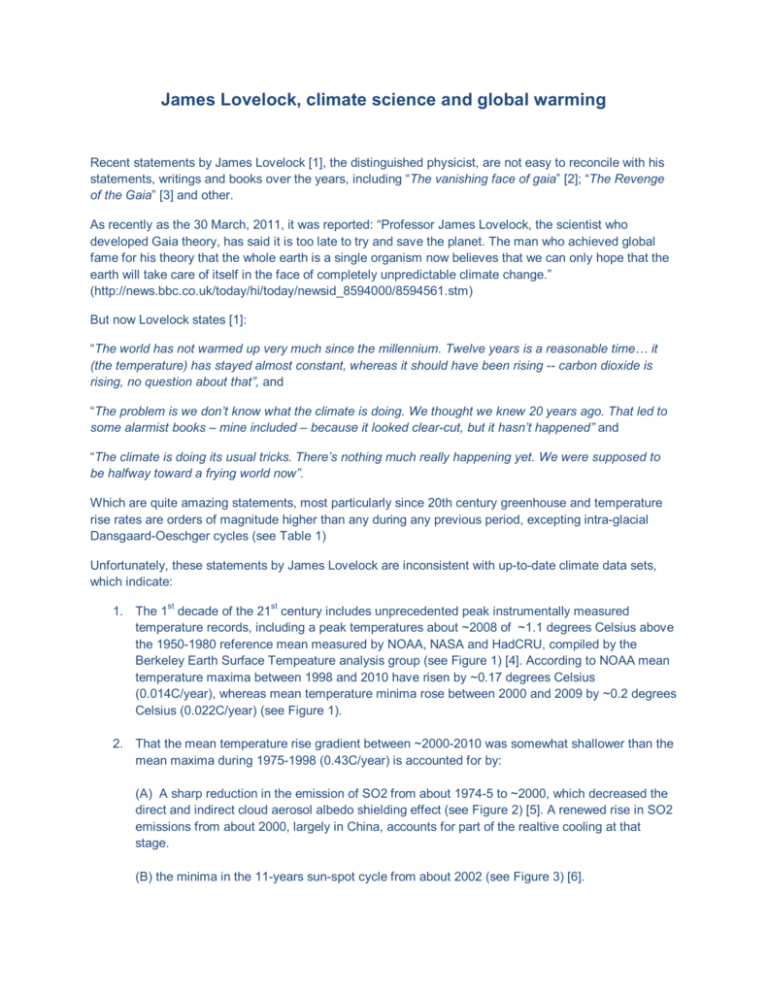
James Lovelock, climate science and global warming Recent statements by James Lovelock [1], the distinguished physicist, are not easy to reconcile with his statements, writings and books over the years, including “The vanishing face of gaia” [2]; “The Revenge of the Gaia” [3] and other. As recently as the 30 March, 2011, it was reported: “Professor James Lovelock, the scientist who developed Gaia theory, has said it is too late to try and save the planet. The man who achieved global fame for his theory that the whole earth is a single organism now believes that we can only hope that the earth will take care of itself in the face of completely unpredictable climate change.” (http://news.bbc.co.uk/today/hi/today/newsid_8594000/8594561.stm) But now Lovelock states [1]: “The world has not warmed up very much since the millennium. Twelve years is a reasonable time… it (the temperature) has stayed almost constant, whereas it should have been rising -- carbon dioxide is rising, no question about that”, and “The problem is we don’t know what the climate is doing. We thought we knew 20 years ago. That led to some alarmist books – mine included – because it looked clear-cut, but it hasn’t happened” and “The climate is doing its usual tricks. There’s nothing much really happening yet. We were supposed to be halfway toward a frying world now”. Which are quite amazing statements, most particularly since 20th century greenhouse and temperature rise rates are orders of magnitude higher than any during any previous period, excepting intra-glacial Dansgaard-Oeschger cycles (see Table 1) Unfortunately, these statements by James Lovelock are inconsistent with up-to-date climate data sets, which indicate: st st 1. The 1 decade of the 21 century includes unprecedented peak instrumentally measured temperature records, including a peak temperatures about ~2008 of ~1.1 degrees Celsius above the 1950-1980 reference mean measured by NOAA, NASA and HadCRU, compiled by the Berkeley Earth Surface Tempeature analysis group (see Figure 1) [4]. According to NOAA mean temperature maxima between 1998 and 2010 have risen by ~0.17 degrees Celsius (0.014C/year), whereas mean temperature minima rose between 2000 and 2009 by ~0.2 degrees Celsius (0.022C/year) (see Figure 1). 2. That the mean temperature rise gradient between ~2000-2010 was somewhat shallower than the mean maxima during 1975-1998 (0.43C/year) is accounted for by: (A) A sharp reduction in the emission of SO2 from about 1974-5 to ~2000, which decreased the direct and indirect cloud aerosol albedo shielding effect (see Figure 2) [5]. A renewed rise in SO2 emissions from about 2000, largely in China, accounts for part of the realtive cooling at that stage. (B) the minima in the 11-years sun-spot cycle from about 2002 (see Figure 3) [6]. (C) the prevalence of La Nina conditions toward the end of the first decade of the 21st century (see Figures 4 and 5). It is a strawman argument to expect temperature trends to change smoothly, or to highlight periods when temperatures have risen at low rates or even declined, and at the same time overlook the mean decadal trend where measured temperatures have risen during the 20th – early 21st centuries by more than 1.0 degrees Celsius (Figure 1). A far greater rise is currently masked by sulphur aerosols without which mean th global tempratures would have risen above 2.0 degrees C since the early 20 century [9]. Given the above it remains a mystery as to the nature of the evidence or reasons underlying James Lovelock’s statements. Popular notion on media and TV shows juxtapose a “belief” versus “scepticism” in climate change. Science, however, is not about “belief” but about measurements and empirical evidence consistent with the basic laws of nature [10]. “Everyone is entitled to his opinions but not to his facts” (Senator Daniel Moynihan) [1] http://worldnews.msnbc.msn.com/_news/2012/04/23/11144098-gaia-scientist-james-lovelock-i-was-alarmistabout-climate-change ; [2] http://www.amazon.com/The-Vanishing-Face-Gaia-Warning/dp/0465015492 [3] http://www.amazon.com/The-Revenge-Gaia-James-Lovelock/dp/046504168X ; [4] http://berkeleyearth.org/available-resources/ [5] www.atmos-chem-phys.net/11/1101/2011/ [6] http://solarscience.msfc.nasa.gov/images/Zurich_Color_Small.jpg [7] http://www.bom.gov.au/climate/current/soihtm1.shtml [8] http://www.ncdc.noaa.gov/sotc/global/2011/13 [9] http://www.atmos-chem-phys-discuss.net/11/27031/2011/acpd-11-27031-2011.html [10] http://www.aip.org/history/climate/co2.htm; http://www.britannica.com/EBchecked/topic/68445/blackbody ; http://en.wikipedia.org/wiki/Stefan%E2%80%93Boltzmann_law ; http://en.wikipedia.org/wiki/Planck's_law ; Table 1. Comparison of mean global temperature rise rates during the Cainozoic, including the K-T impact events , the 55.9 Ma PETM hyperthermal event , end-Eocene freeze and formation of the Antarctic ice sheet (34-32 Ma) , Oligocene, Miocene and end-Pliocene thermal rises, glacial terminations , Dansgaard-Oeschger cycles ,8.2 kyr event , intraHolocene events and Anthropocene climate change . Figure 1. Global land temperature estimates T(avg), smoothed by a 12-month moving average. The temperature anomaly is the difference between the estimated temperature and the mean in the period 1950-1980 for each temperature series. Note the similarity of many of the short-term fluctuations with periods 2-15 years. The Berkeley Earth data were randomly chosen from 30,964 sites that were not used by the other groups. http://berkeleyearth.org/available-resources/ Figure 2. Anthropogenic sulfur diozide emissions 1850-2005 Figure 3. Sun spot numbers between 1950 and 2011. http://solarscience.msfc.nasa.gov/images/Zurich_Color_Small.jpg Figure 4. ENSO cycles between 1880-2011. http://www.bom.gov.au/climate/current/soihtm1.shtml Figure 5. 1950-2011 global temperature anomalies, El-Nino phases and La-Nina phases http://www.ncdc.noaa.gov/sotc/global/2011/13 Andrew Glikson Earth and palaeoclimate science Australian National University 26 April, 2012

